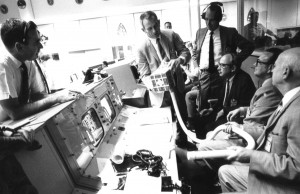 Here is an interesting one – Researchers at Erasmus University and Cambridge University identified that middle managers copy their boss’s behaviour if they are working in close/adjacent proximity to that boss. Conversely, if the boss is not in close proximity (e.g. has an office down the corridor), then the middle manager may behave differently to the boss.This includes good and bad behaviour.
Here is an interesting one – Researchers at Erasmus University and Cambridge University identified that middle managers copy their boss’s behaviour if they are working in close/adjacent proximity to that boss. Conversely, if the boss is not in close proximity (e.g. has an office down the corridor), then the middle manager may behave differently to the boss.This includes good and bad behaviour.
♦Red light warnings♦: an over-bearing, micro-managing and ever-present boss is likely to spawn equally over-bearing middle managers and subsequently a wonderfully consistent but wildly dysfunctional team. On the other hand an over-bearing boss who is remote from the team will get…er… disappointed and will wonder why the team doesn’t do what they expect (perhaps).
♦Amber warning♦: An effective boss who is too distant may not get the cooperation expected – good bosses need to get down to the coalface and see what is happening and whether their middle managers are doing things in the ways that are needed.
♦Green Light♦: An effective boss who is close to the team will have a coherent set of middle managers and a consistent culture across the team.
Dr. Gijs Van Houwelingen who co-wrote the survey says: “It is crucial that organisations understand the threat of overly close and highly interdependent relationships between lower and higher management in the organisation. Managers at all levels in any organisation need to strike a balance between a certain sense of closeness to ensure efficiency, and some sense of distance to ensure that negative top-level behaviour does not spread unhindered through all layers of the organisation.”
Finally the survey identifies two measures of distance: social (the distance you feel from the other person) and physical (i.e. space). Interestingly we have much more choice over social distance – i.e. who we choose to spend time with and be seen with – and how that impacts on the way that we choose to behave. You just need to be conscious of who to associate with and who to avoid.
Links:
HR Management (2015) Middle managers copy bosses’ bad behaviour. http://www.hrgrapevine.com/markets/hr/article/middle-managers-copy-bosses-bad-behaviour







 Throughout our lives we are educated to make rational decisions. What are the costs, what are the benefits, what are the impacts, what is possible? These are relatively easy elements to learn. Unfortunately our experience tells us that things don’t always work out as planned.
Throughout our lives we are educated to make rational decisions. What are the costs, what are the benefits, what are the impacts, what is possible? These are relatively easy elements to learn. Unfortunately our experience tells us that things don’t always work out as planned.